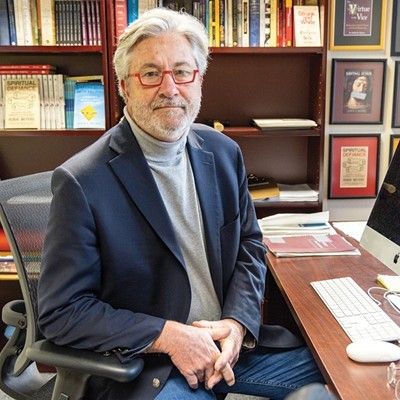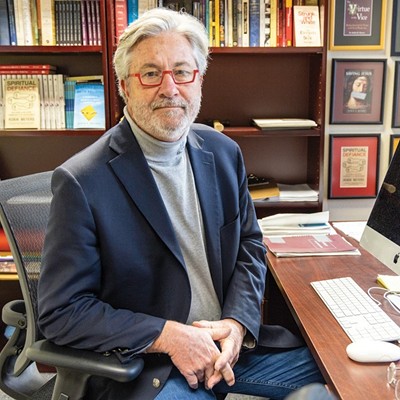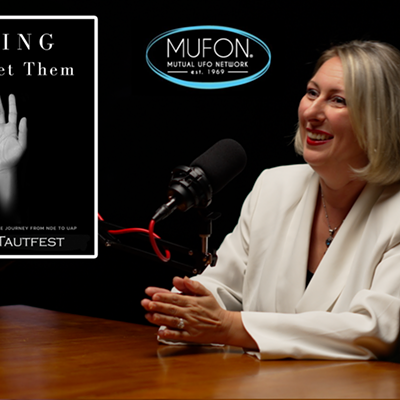The rhetorician Kenneth Burke is best known for his theories of human communication as drama, but perhaps his most famous quote is about the essence of the human species itself. This is pre-inclusive language, but otherwise it’s a masterpiece: Man is the symbol-using, symbol-making, symbol-misusing animal, inventor of the negative, separated from his natural condition by instruments of his own making, goaded by the spirit of hierarchy, and rotten with perfection.
You may wonder what this has to do with the rise of Christian nationalism, but let’s begin with our capacity to make, use and misuse symbols. Only human beings create signifiers that stand for something else, which is not the same thing as the thing signified, but which invariably becomes confused with it—and then, in some cases, inseparable from it. This is especially true when the symbol is an image. Consider one of the most universal symbols in the world, the red cursive script that reads: Coca-Cola. Upon seeing it, people who like Coke can have a visceral response to the symbol, especially if they are thirsty. Coke was once referred to as the “real thing”—which is odd given that it is an artificially colored, artificially flavored, artificially carbonated non-nutritional beverage partaking of absolutely nothing real. But this does not matter. The symbol has the power to become the thing it symbolizes and logic neither creates the effect, not negates it.
Now consider the most iconic image of God in the western world since the Renaissance, the portrait of God on the ceiling of the Sistine chapel.
He is an older male, bearded but with a youthful body, and has the face of a European elder. Is that Eve under his arm? Is she a present for Adam? What holds him up? Is he enclosed in some kind of heavenly drapery? Regardless, there is no mistaking his gender as he reaches out surrounded by angels, extending his hand to a reclining Adam who is noticeably not working very hard at making contact.
Intellectually we know that it is “just a symbol,” of course, and not the thing symbolized, but tell that to the heart. Existentially what is true of this image of God is also true of the iconic images of Santa Claus or Superman. When asked to explain or describe either one, the original images remain, as if a default setting in the brain. Our connotative responses to them are stamped on the psyche, stronger than any linguistic and conceptual explanations of the generous qualities of Santa Claus, for example, or the world saving powers of Superman. Words are strong, but the image is stronger.
Research has shown that archetypal images, especially powerful and formative ones, are never fully removed as default settings in the brain until they are replaced by different images. So, to use the civil rights movement as an example, it was the image of southern police officers turning the fire hoses on young protestors and sending in the dogs that displaced other images that white Americans had of African-Americans as something other than the object of humiliation and violence.
Although many people will not, when asked to describe God, speak of God as an old, bearded, White Guy in the Sky, there are precious few other images to replace the ones we have. Since images of God are, by definition, difficult to come by, the default image for God that remains in most people’s minds, I would argue, is Michelangelo’s depiction of Blake’s nobodaddy. He is not only “up” there somewhere (which is a difficult concept itself given that “up” is a relative concept when you live on a round planet), but He is clearly the King of the Universe (there are no other gods around him) and he’s white, and the man he is reaching down to help is white, and the heavenly hosts that surround him are all white. This is not just white male privilege at the top of the food chain, but Cosmic White Privilege at the top of the Cosmic Food Chain. He is not, after all, reaching down to bless a woman, or a child of color, or even an animal.
The gap between God’s finger and Adam’s finger is one way to understand Burke’s phrase, inventor of the negative and goaded by hierarchy. We know what we are—humans—because we know what we are not—God. And although we try to draw near, we will never finally leave our place in the scheme of things. What’s more, although we want to be like God, because we are rotten with perfection and always striving, separation is the fundamental human condition.
When we look at what is happening in American politics today, I would argue that we are experiencing, after Trump’s rise to power, a psychosexual backlash to the default setting of the white cosmic hierarchy that is represented by Michelangelo’s depiction of God. After eight years of a black man in the White House and facing the prospect of eight more years of a woman (who wore pants no less) becoming the default leader of the American family, the rise of Christian nationalism, while attributable to many factors, is also fundamentally grounded in what many white males of all social classes perceive to be the need for a kind of emergency reset of the pecking order of reality itself—a restoration of the maleness of God, the whiteness of God, the straightness of God, and the in-charge resoluteness of God.
What’s more, that in Michelangelo’s image of a God reaching down to connect with a creature he has created but also seems to have lost control of, many disaffected and struggling white males see a metaphor for all displaced fathers who reach out to reel in (perhaps with the back of their hand) those who need to reassert their control of their families (their creation), their authority (men are told to rule their households), and their white, male, straight, authoritarian hegemony.
As an older white male, I can easily go undercover in Oklahoma City while wearing work clothes and a baseball cap in Home Depot. The working guys talk to me because they think I’m one of them. What they tell me is that the world they once knew has unraveled and is threatened by idiots (liberals, professors, government bureaucrats, uppity women, welfare Blacks, and those forcing a “gay agenda” on the world). It may be a twisted way to use Burke, but they are very much “goaded by hierarchy.” They believe that suddenly nobody knows their place, much less stays in it.
What’s more, Michelangelo’s heterosexual God, (created ironically by a homosexual artist) has the right, so our scriptures tell us (Genesis 6:1-4), to take for themselves (sexually assault) the “daughters of the earth.” This is the Harvey Weinstein of heaven. God’s famous “reach” as depicted by Michelangelo is not in this case to a daughter of the earth but to his “son.” The gesture appears almost like a kind of cosmic “bromance”—extending the White Father’s divine hand to the white prodigal son’s reluctant hand, as if to say, “Come home bubba.” Get up, be a man, lead the household of the earth, and subdue it, and do not succumb to your emasculation at the hands of those who would displace you, who would dethrone you, who would render you superfluous in a world of lesbians and artificial insemination. I have a real woman for you under my arm, a “helper” made from your spare rib.
It is more than strange that the working poor would love Trump, whose lives in a gilded world, a gaudy wedding venue in Florida, surrounded by earthly angels (supermodels) and is, like his father, appropriately jealous, short-tempered, impetuous and insulting when the times call for Daddy to throw a fit in the house by “tweeting others as he would not want to be tweeted.” We are indeed, as Burke put it, separated from [our] natural condition by instruments of [our] own making. Son of Nobodaddy uses his cell phone to send thunderbolts in the middle of the night.
Because the image is primal, we still have a White Sky Daddy working with his beloved White Son-of-Sky Daddy to build a better world for people who look like he does. Their fingers may eventually touch. So be afraid. Be very afraid.
Because we are indeed symbol-using, symbol-making, symbol misusing animal(s), inventor of the negative, separated from [our] natural condition by instruments of [our] own making, goaded by the spirit of hierarchy, and rotten with perfection—we are at a moment of great peril. Just as Christian nationalism is rising, we must confront the fact that the God most Christians worship is precisely the image of their party’s leader.
The Rev. Dr. Robin Meyers is pastor of First Congregational Church UCC in Norman and retired senior minister of Mayflower Congregational UCC in Oklahoma City. He is currently Professor of Public Speaking, and Distinguished Professor of Social Justice Emeritus in the Philosophy Department at Oklahoma City University, and the author of eight books on religion and American culture, the most recent of which is, Saving God from Religion: A Minister’s Search for Faith in a Skeptical Age.
Visit robinmeyers.com












